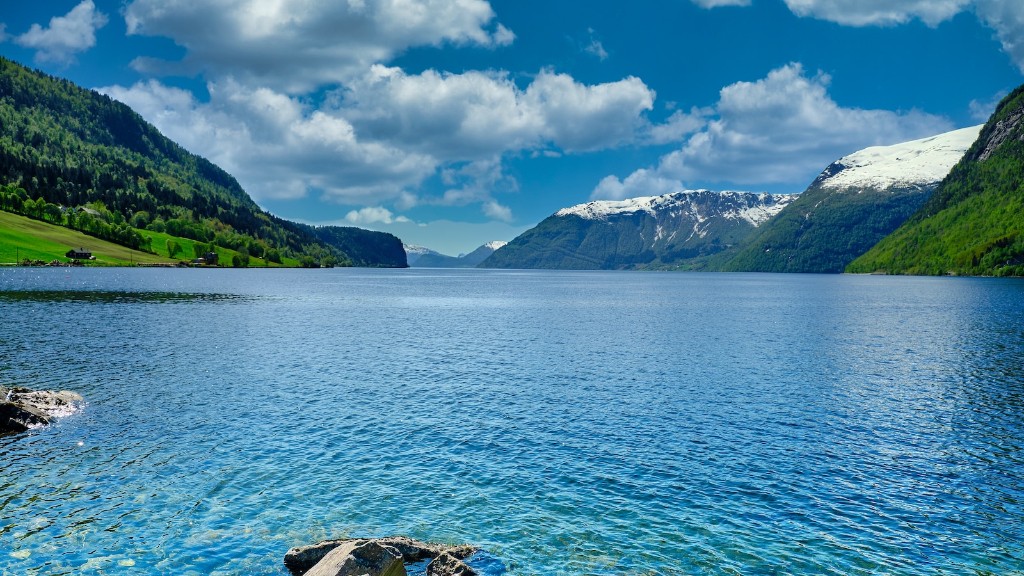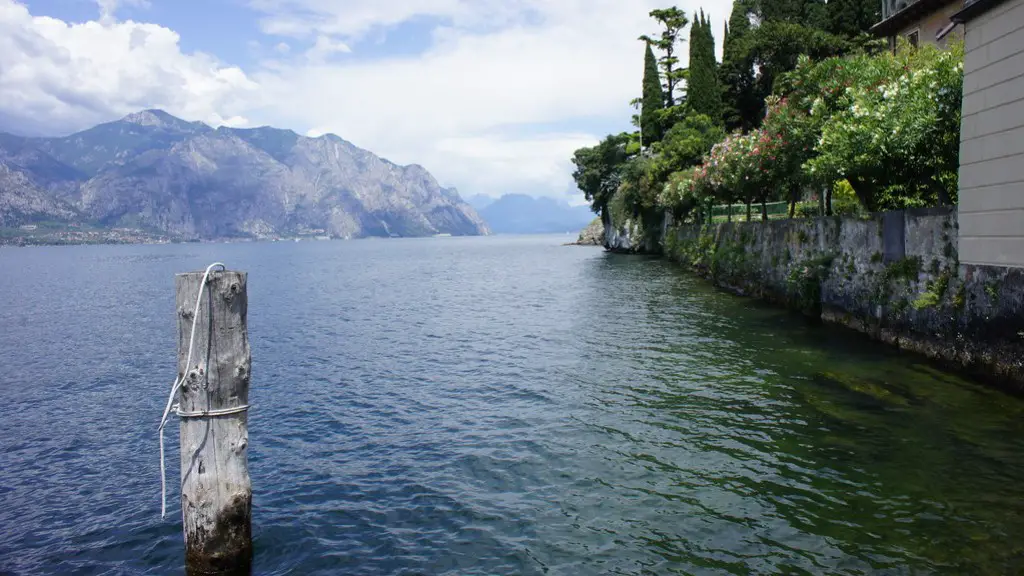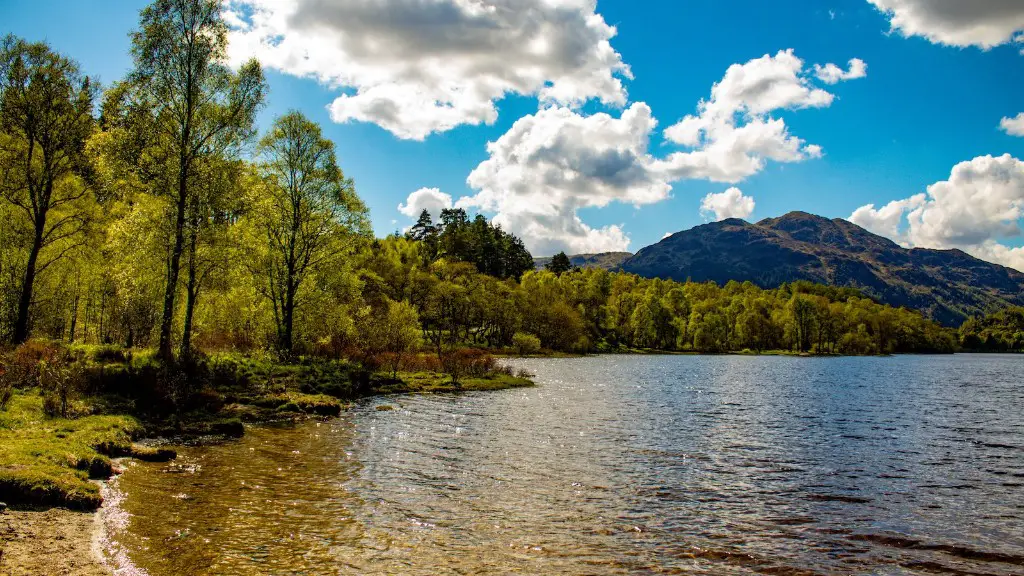What is the Geography of Lake Titicaca?
Lake Titicaca lies at an elevation of 3,811 meters (12,500 feet) above sea level and spans an area of 8,500 square kilometers (3,300 square miles). It is the largest lake in South America and also one of the largest in the world. The lake is divided between Peru and Bolivia with Peru controlling the larger portion. Narrow straits connect the two sides of the lake and on its western shore lies the city of Puno in Peru and Copacabana in Bolivia. The lake is the largest body of water on the Altiplano plateau, which is an area stretching across the Andes region between Bolivia and Peru.
What Impact Does the Lake Have on the Climate?
Lake Titicaca has a large influence on the climate of the surrounding region as it acts as a buffer against weather extremes. The lake influences the weather patterns of the area and for this reason, the region is usually much more temperate than other parts of the Andes. The lake also acts as a major water source for both Peru and Bolivia, providing irrigation and hydroelectric power to the region.
Why is Lake Titicaca an Archaeological and Historical Site?
Lake Titicaca is an important archaeological and historical site. It has long been a place of spiritual significance to the surrounding cultures, who believed the gods created the lake. There is evidence of human settlements around the lake going back over 10,000 years. In particular, the area around the lake has been home to the Uros people since around the 5th century. The Uros are a pre-Incan culture who live on artificial islands made from totora reeds. The area is also home to several important archaeological sites such as the Tiwanaku and Puma Punku.
How Is the Lake Titicaca Used Today?
Today, Lake Titicaca is an important source of sustenance and income for both Peru and Bolivia. Not only is the lake a major water source, it also supports the extensive fishing industry in the area. Fish are processed and dried and then exported or used at local restaurants and markets. Tourism is also a major industry in the area. Visitors can take boat tours to visit the Uros people, explore the archaeological sites, or simply relax and enjoy the panoramic views of the lake.
What is the State of the Lake’s Ecosystem?
The lake’s ecosystem is under stress due to the pressures of a rapidly growing population in the area and visitors. Pollution from sewage, agricultural runoff, and industrial runoff are all contributing to pollution in the lake. This has caused a sharp decline in some species of fish and the water receptiveness of the lake is decreasing. Efforts to protect the lake include the bolstered regulations by Peru and Bolivia, the promotion of more sustainable sources of energy, and the re-stocking of some species of fish.
What is Being Done to Preserve the Culture and History of Lake Titicaca?
The Uros people, who live on the artificial reed islands, are actively trying to preserve their culture and history and share it with the world. They are working to improve their traditional skills and pass on their knowledge to their children. Organizations like the Cultural Perspectives Foundation have also been instrumental in preserving the culture and environment of Lake Titicaca by facilitating dialogue between cultures, providing educational programs, and supporting local projects.
How Has Climate Change Affected the Lake?
Climate change has had a profound impact on Lake Titicaca. Rising global temperatures have caused the lake level to drop dramatically in recent years and the water itself has become more acidic. This has had a significant impact on the fish population and the overall ecosystem of the lake. The colder temperatures have also impacted the tourism industry in the area, as fewer people are willing to visit due to the colder temperatures. There is also the increased risk of landslides and mudslides due to the rising temperatures and shrinking water level.
What Are the Efforts to Adapt and Mitigate Climate Change?
Both Peru and Bolivia are working to mitigate the impacts of climate change on Lake Titicaca. Peru and Bolivia have both signed the Paris Agreement, pledging to reduce their emissions and take steps towards climate change adaptation. Projects like the Integrated Watershed Management project seek to reduce hydrological risks and further protect the lake. The Ilo Declaration was also signed by both Peru and Bolivia to protect the southern part of the lake and mitigate climate change impacts.
What Are the Benefits of the Lake?
The Lake Titicaca region provides a range of economic, social, and environmental benefits. On an economic level, the lake supports a wide array of industries such as agriculture, tourism, and fishing. It is also an important source of food, drinking water, and hydroelectric power. Socially, the lake plays a crucial role in the culture of the local people, who rely on the lake for spiritual and cultural reasons. Environmentally, the lake provides a crucial habitat for plant and animal species and plays an important role in regulating the climate of the surrounding region.
What Are the Challenges Facing the Lake?
The Lake Titicaca region is facing a number of challenges such as water pollution, over-fishing, loss of habitat, and climate change. These issues are exacerbated by overuse of the lake, increasing levels of sedimentation, and deforestation. Pollution from sewage, agricultural runoff, and industrial runoff all have negative effects on the lake’s ecosystem. There is also a need to implement more effective regulations and better management practices in the area.
What is the Role of Local and International Organizations in Protecting the Lake?
Local and international organizations are playing an important role in protecting Lake Titicaca and its inhabitants. Organizations such as the Cultural Perspectives Foundation are dedicated to promoting dialogue between cultures, providing educational programs, and supporting local projects. Internationally, Peru and Bolivia have signed the Paris Agreement and the Ilo Declaration to protect the lake and reduce emissions. Additionally, organizations like the World Bank and UN have implemented projects to reduce hydrological risks and further protect the lake.


